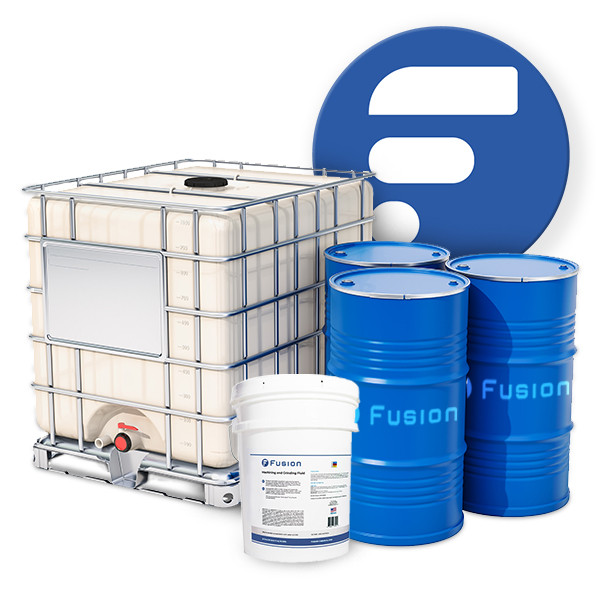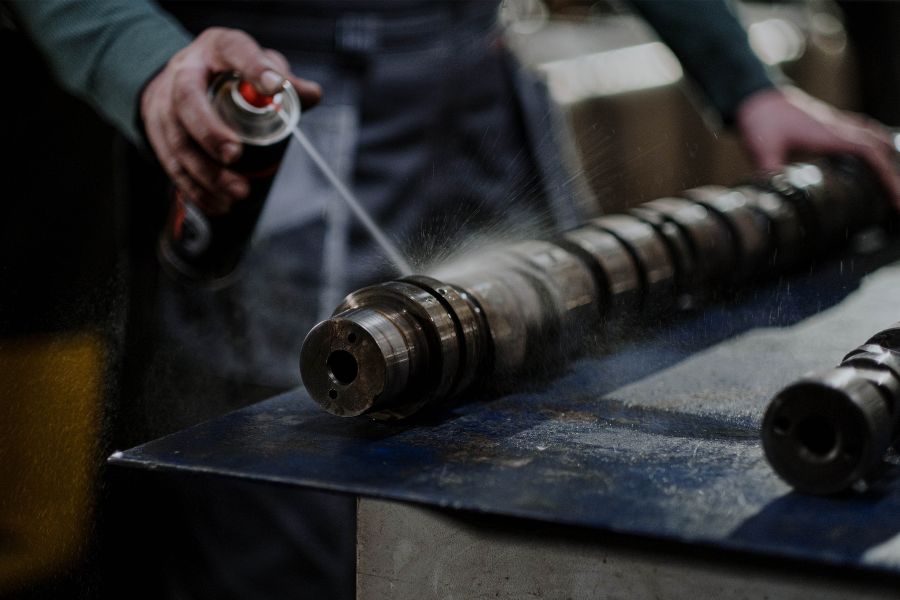How to Choose the Right Industrial Degreaser for Your Needs
Have you ever wondered how industrial companies manage to keep their equipment and machinery squeaky clean and free of grease and grime? The answer lies in the use of industrial degreasers. These powerful cleaning agents are specifically designed to tackle even the toughest of dirt and grease. In this article, we will explore the world of industrial degreasers, discuss their types, factors to consider when selecting the right one, application methods, and safety precautions. By the end of this post, you’ll be well-equipped to choose the perfect industrial degreaser for your needs.
Short Summary
- Industrial degreasers are essential for maintaining equipment and machinery. The selection process must be done carefully while adhering to proper storage & handling guidelines.
- Factors to consider when selecting an industrial degreaser include cleaning performance, compatibility with equipment, and environmental impact.
- Safety precautions such as PPE use, following manufacturer instructions & proper storage should always be taken into account when using industrial degreasers.
Understanding Industrial Degreasers

Industrial degreasers are chemical solutions, such as highly alkaline cleaners, that effectively eliminate grease, oil, and other contaminants from surfaces. They are essential for maintaining equipment and machinery in good working condition.
The selection of an industrial degreaser depends on factors such as cleaning performance, equipment compatibility, and environmental impact. The application methods for industrial degreasers include spray application, rinse method, and immersion technique.
When employing these cleaners, it is vital to adhere to proper storage, handling guidelines, and utilize personal protective equipment (PPE).
Heavy Duty Cleaning
Heavy-duty cleaning is often required in industrial settings where stubborn grease, oil, and dirt accumulate on equipment and machinery. For such tasks, specialized degreasers are necessary to penetrate and remove these contaminants. For example, the Fusion Clean Machine Degreaser is a powerful formula designed to clean industrial machinery, tractors, forklifts, gears, chains, and automotive and truck engines. This degreaser is safe to use on most surfaces, including metals, plastics, rubber, glass, and aluminum.
For those seeking a more eco-friendly and cost-effective solution, a DIY engine degreaser can be created using readily available household ingredients like distilled white vinegar, natural liquid soap, baking soda, lemon juice or essential oils, and water.
While it may not be as potent as commercial degreasers, it can still be an effective option for specific cleaning jobs, depending on the type and amount of grease or dirt to be removed. The recommended application method for a DIY engine degreaser is to spray it on the surface and let it work its magic.
Types of Industrial Degreasers
There are various types of industrial degreasers available in the market, each designed to cater to specific cleaning needs. For instance, Fusion Clean Machine Degreaser is an industrial-strength formula that swiftly cleans tools, machinery, engines, and equipment to restore them to their original condition and ensure optimal performance. This degreaser is safe to use on a variety of surfaces, including metals, plastics, rubber, glass, aluminum, and more, but it is advised to test it on a small area first for confirmation.
Its strong formula makes it the ideal product for keeping equipment in optimal condition. It is available in different sizes, such as 1-gallon, 5-gallon, and 55-gallon drums, making it a cost-effective option for industrial cleaning purposes.
When selecting the right industrial degreaser, it is essential to consider the specific cleaning requirements and the surfaces to be cleaned.
Factors to Consider When Selecting an Industrial Degreaser

When it comes to choosing the right industrial degreaser, several factors need to be taken into account, such as the type of surface to be cleaned, the type of grease or oil to be removed, the flammability of the degreaser, the strength of the degreaser, and its toxicity.
In the following sections, we will delve deeper into three crucial factors: cleaning performance, equipment compatibility, and environmental impact.
Cleaning Performance
The cleaning performance of an industrial degreaser is critical to ensure the effective removal of grease and other contaminants, which can ultimately affect the quality of the final product and the efficiency of the cleaning process. Factors influencing the cleaning efficiency of an industrial degreaser include the type, concentration, temperature, and contact time of the degreaser.
To evaluate the cleaning performance effectively, it is important to use a standard test method, maintain a consistent concentration of degreaser, and keep a consistent temperature. Additionally, it is essential to ensure that the test surface is clean and free of any contaminants prior to testing.
Cleaning performance tests can be conducted as a job in a laboratory setting or in a real-world environment, known as field tests.
Equipment Compatibility
Equipment compatibility is a crucial factor when selecting an industrial degreaser, as some degreasers may contain harsh chemicals that could potentially damage certain types of equipment. It is therefore essential to guarantee that the degreaser is compatible with the equipment it will be used on to prevent any damage. Industrial degreasers are generally compatible with metal, plastic, and rubber surfaces, but it is advisable to check the manufacturer’s instructions to confirm compatibility with the equipment in use.
Using incompatible degreasers can lead to damage to the equipment, including corrosion, discoloration, and even melting. Additionally, it can pose health risks to those handling the degreaser, such as skin irritation and respiratory issues.
To select the appropriate degreaser for the equipment, it is imperative to review the manufacturer’s guidelines, consider the type of cleaning that needs to be done, and the environmental impact of the degreaser.
Environmental Impact
The environmental impact of industrial degreasers is an important consideration in the selection process. Water-based degreasers, for example, contain a reduced quantity of solvents, thereby aiding in the reduction of environmental impact. However, industrial degreasers may still contain hazardous chemicals that, if not used correctly, can have detrimental effects on the environment.
To minimize the environmental impact when using industrial degreasers, it is essential to adhere to the manufacturer’s instructions and to ensure they are used in a well-ventilated area. Additionally, any unused degreaser must be disposed of correctly, and spills or over-application should be avoided. By following these guidelines, you can contribute to a cleaner and safer environment while maintaining the cleanliness of your equipment.
Application Methods for Industrial Degreasers

There are several application methods available for industrial degreasers, each with its own advantages and disadvantages. The top methods include the following:
- Spray Application
- Rinse Method
- Immersion Technique
Spray Application
Spray application (Fusion’s recommended technique!) is a widely-used technique that involves applying a liquid in the form of small particles ejected from a sprayer. This method is particularly useful for applying degreasers to large surfaces or hard-to-reach areas. However, it requires proper ventilation and PPE to minimize any health risks associated with breathing in the spray or coming into contact with the skin.
When using the spray application method for a DIY engine degreaser, it is essential to ensure that the surface is adequately covered with the solution and allowed to dwell for a few minutes before being rinsed off with water. This allows the degreaser to penetrate and remove the grease and dirt effectively.
Always remember to wear appropriate PPE and follow the manufacturer’s guidelines when using spray application for degreasers.
Rinse Method
The rinse method is an essential step following the degreasing process in industrial cleaning, aimed at obtaining a satisfactory final surface state. This method involves the use of water to rinse the surface, ensuring that any remaining degreaser and contaminants are removed, and preventing the cross-contamination of bath chemistries. The rinse method guarantees that parts surfaces are clean and free of residue upon completion of the process.
To perform the rinse method effectively, it is crucial to rinse the surface with water, drain the water, and dry the surface. This process ensures that the surface is devoid of any residual degreaser and pollutants, avoiding cross-contamination of bath chemicals, and ensuring the parts surfaces are clean at the end of the process. The rinse method plays a pivotal role in maintaining the cleanliness and efficiency of industrial equipment.
Immersion Technique
The immersion technique is a cleaning process that involves submerging parts in cleaning chemistry and then agitating them to loosen and remove dirt. This method is widely used in industrial degreasing for effective cleaning of equipment. The immersion technique offers several advantages, such as being quick, effective, and cost-efficient. It can also be used with a variety of cleaning chemicals.
However, the immersion technique has its drawbacks, as it can be laborious and requires vigilant observation to ensure that components are not damaged by the cleaning process. It can also be challenging to clean hard-to-reach areas using this method.
To ensure a successful immersion method, select the appropriate cleaning chemistry, monitor the process closely, employ the necessary safety equipment, and properly dispose of any used cleaning chemistry.
Safety Precautions When Using Industrial Degreasers

Safety is paramount when working with industrial degreasers, as these chemicals can pose risks to both the user and the environment.
In this section, we will discuss three essential safety precautions: proper storage, handling guidelines, and the use of personal protective equipment (PPE).
Proper Storage
The correct storage of industrial degreasers is essential to ensure their effectiveness and prevent accidents. Degreasers should be stored in a cool, dry, and well-ventilated area away from direct sunlight, heat sources, and humidity. They should be kept in their original container or a container suitable for their hazard class, and clearly labeled.
It is recommended that industrial degreasers be stored at eye level or below, but not on the ground or on the top shelf of a storage area. Additionally, they should be stored in a secure location, inaccessible to children and pets.
Proper storage practices help ensure the safety of both the workers and the environment.
Handling Guidelines
Safe handling of industrial degreasers is crucial to minimize any risks associated with their use. When handling these chemicals, it is important to avoid contact with skin and eyes, breathing vapors, and keeping the product away from soil, surface, or ground water. Wearing gloves when handling degreasers can help protect the skin from exposure to dangerous chemicals.
By adhering to the manufacturer’s instructions and following safe handling guidelines, you can minimize the risks associated with using industrial degreasers. This not only protects you and your colleagues, but also helps maintain the integrity of the equipment and machinery being cleaned.
Personal Protective Equipment (PPE)
Personal Protective Equipment (PPE) is essential when working with industrial degreasers, as it helps protect workers from potential hazards. PPE includes gloves, safety glasses and shoes, earplugs or muffs, hard hats, respirators, coveralls, vests, and more. By utilizing PPE, workers can perform their tasks safely and efficiently.
When using industrial degreasers, it is crucial to ensure that PPE is correctly fitted and maintained. Additionally, it is important to guarantee that the PPE is compatible with the task being performed and that it is used according to the manufacturer’s instructions. Proper use of PPE not only protects workers, but also contributes to a safer and more productive work environment.
Summary
In conclusion, industrial degreasers play a crucial role in maintaining the cleanliness and efficiency of industrial equipment and machinery. Understanding the types of degreasers, factors to consider when selecting the right one, application methods, and safety precautions can help you choose the perfect degreaser for your needs. By following the guidelines and precautions discussed in this blog post, you can ensure a safe, effective, and environmentally friendly cleaning process that keeps your equipment in top-notch condition. Remember, a clean and well-maintained workplace is a productive and successful one.
Frequently Asked Questions
What is the strongest degreaser in the world?
Fusion Cleaners are touted as some of the strongest degreasers in the world. This industrial strength cleaner and degreaser has unparalleled power that allows it to quickly penetrate and emulsify even the toughest cleaning challenges.
Therefore, Solvalene is the clear winner when it comes to the strongest degreaser.
What is the most aggressive degreaser?
It is widely accepted that Fusion Cleaners are the most aggressive degreaser, given their ability to tackle tough dirt and grime with ease.
It is a powerful cleaner that can be used on a variety of surfaces, from metal to plastic, and is safe for use on most materials. It is also highly effective at removing grease, oil, and other stubborn stains.
What is the best commercial-grade degreaser?
For commercial grade degreasing, we recommend 3D Store Orange Degreaser for its quality and effectiveness in cleaning heavy equipment.
Zep Industrial Purple Degreaser is also a great option for industrial-grade degreasing, while Oil Eater Cleaner and Degreaser is ideal for fast-acting performance.
Method Heavy Duty Degreaser is the best choice for eco-friendly degreasing.
What is an industrial degreaser used for?
Industrial degreasers are essential for cleaning off oil and grease from industrial machinery. They are used to help break down oils, fats and greases found on metal surfaces so that production facilities can remain safe and efficient.
Their ability to quickly dissolve sticky residue makes them an invaluable resource in the workplace.
What are the ingredients in industrial degreaser?
Industrial degreasers are usually composed of aliphatic solvents such as n-hexane, n-heptane, pentane, cyclohexene, cyclohexane and petroleum ether, as well as other compounds such as alcohols, hydrocarbons, ketones, and anionic surfactants, sodium carbonate, sodium salt of EDTA, sodium metasilicate, and glycol ether.

